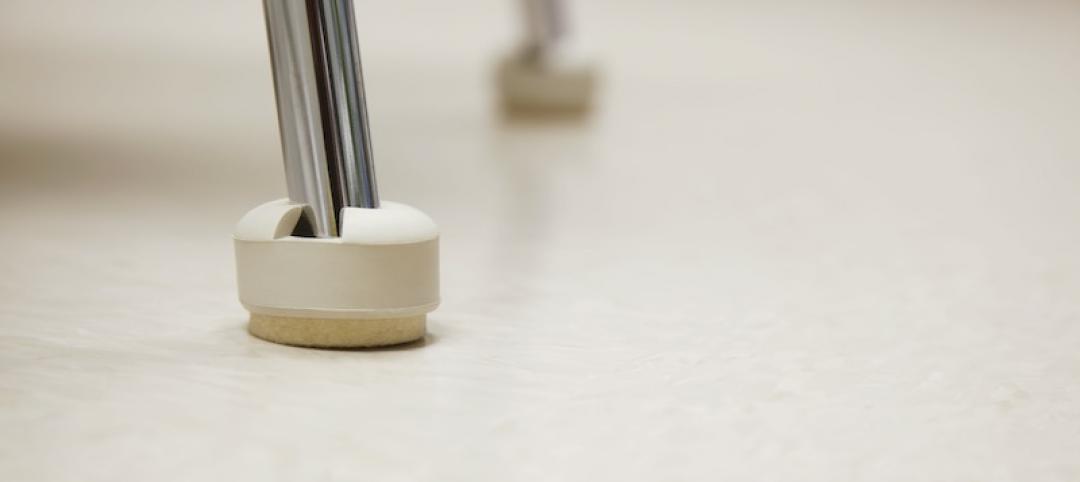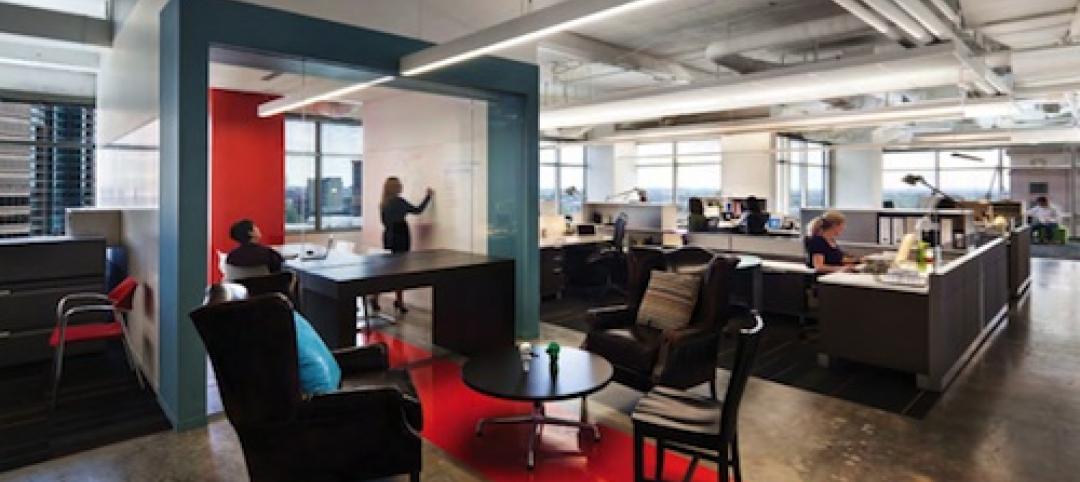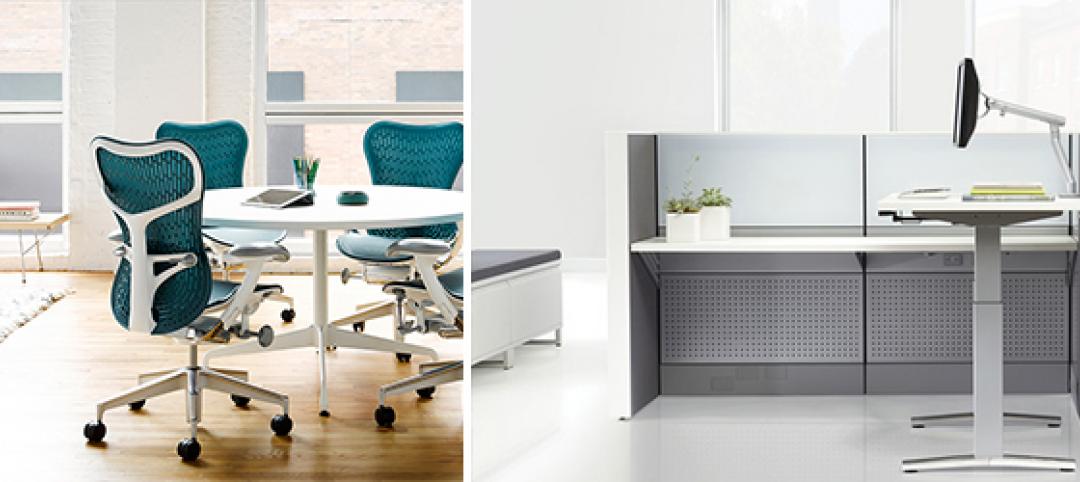The new Los Angeles headquarters for fast-growing Califia Farms, a brand of dairy alternative products, was designed with the post-Covid hybrid work environment in mind. Located in Maxwell Coffee House, a historic production facility built in 1924 that has become a vibrant mixed-use complex, the office features a café bordered by generous meeting rooms.
The café includes a bar and tasting room, with a sizable screen that displays the company’s digital media work. The two-level café, staffed by a barista, is a central hub for meeting, socializing, and indulging in Califia’s own plant-based milks, creamers, and frozen desserts.
“As soon as you step inside the office, you’re transported to the inviting ambiance of a bustling café,” says Alexis Dennis-Huether, the project's lead designer and Associate Principal with SLAM. “Rather than being greeted by a traditional receptionist, there’s a friendly barista, setting the tone for a unique and memorable experience. This entrance creates an impactful first impression that perfectly captures the brand's bold and playful personality.”
The challenge of accommodating a large team of 200 staff members within a 30,000 sf space inspired design firm SLAM to get creative with multi-purpose, open concept areas, according to a news release. This approach allowed for a stronger emphasis on functionality and flexibility.
Hybrid office design includes tasting room, indoor-outdoor connection
Hybrid office models can lead to worker isolation, but SLAM designed the space to counteract this risk. Large amenity spaces offer flexibility for chance encounters, collaboration, and meetings.
Equipped with kitchen appliances including a black electric cooktop and stainless-steel refrigerator, and the technology of a meeting room, the tasting room serves as a research and development space, where staff create, test, and refine products. It also becomes a relaxed setting for team activities, break-out meetings, and lunch preparation.

Throughout the office, 15% of workstations are dedicated to hoteling, all bathed with an abundance of natural light through large windows and skylights. Meeting rooms are equipped with high-quality video-conferencing solutions, allowing for seamless hybrid meetings and teamwork.
One design goal was to create an environment that interfaces with the public space outside. Creating vital indoor-outdoor connections, branding elements and office operations are visible from the street while roll-up garage doors open out to a patio to extend the office atmosphere into the downtown streetscape. Because of its strong street presence, Califia has become a friendly neighborhood fixture, fostering an important sense of community in this evolving area.
The office is adorned with abstract interpretations of the company’s brand speaking to a distinct identity and spirited culture. Califia Farms’ signature amphora-shaped bottle, with its distinctive curves, presides over the café lounge as a tinplated metal silhouette, adding a striking and eye-catching element. The continuous and smooth lines of the bottle are captured in the curvatures of the café bar while a more abstract interpretation of their product design is stamped into the carpet pattern.
Bold brand colors of red and blue are balanced against natural materials. Vermilion red encased banquette niches are recessed into wood-panelled walls, allowing for privacy and comfort. Framed in double pane glass, meeting rooms provide a sense of transparency, and feature small touches that mirror the Califia Farms’ brand, including an outline in a thick red trim that accentuates sharp angles and warm-toned finishes.
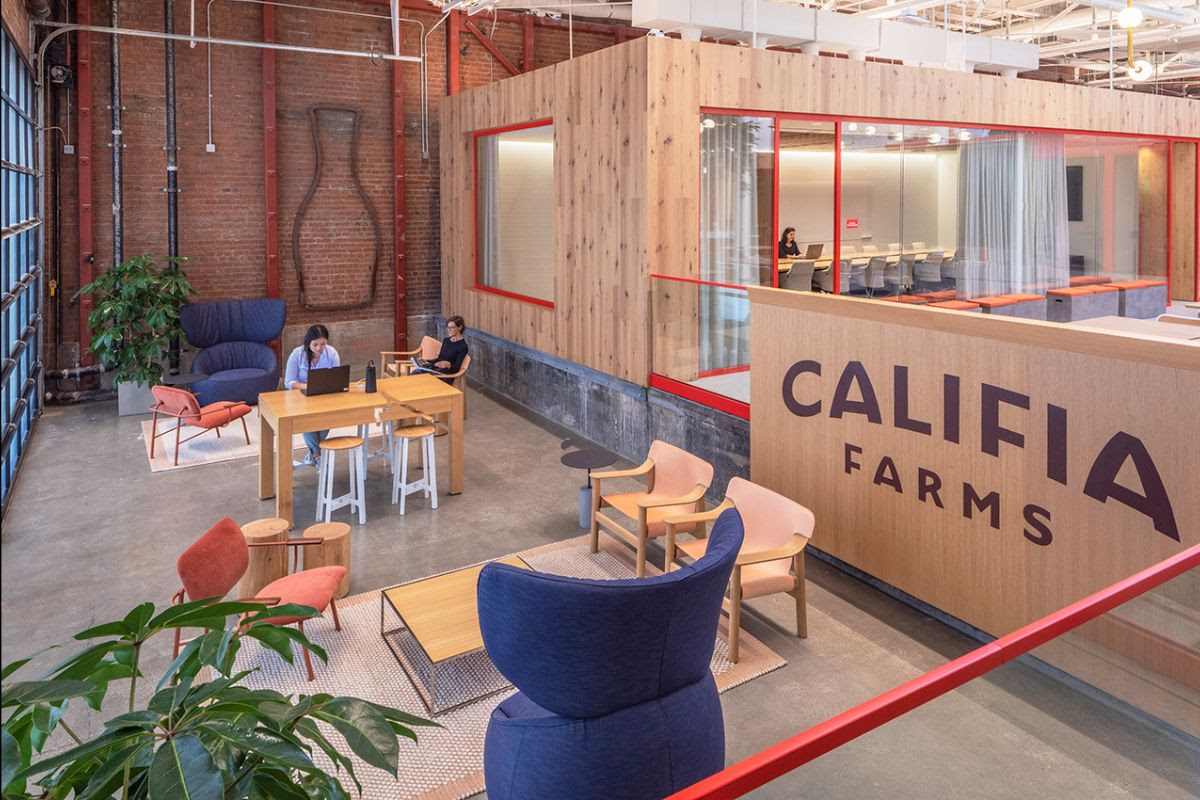
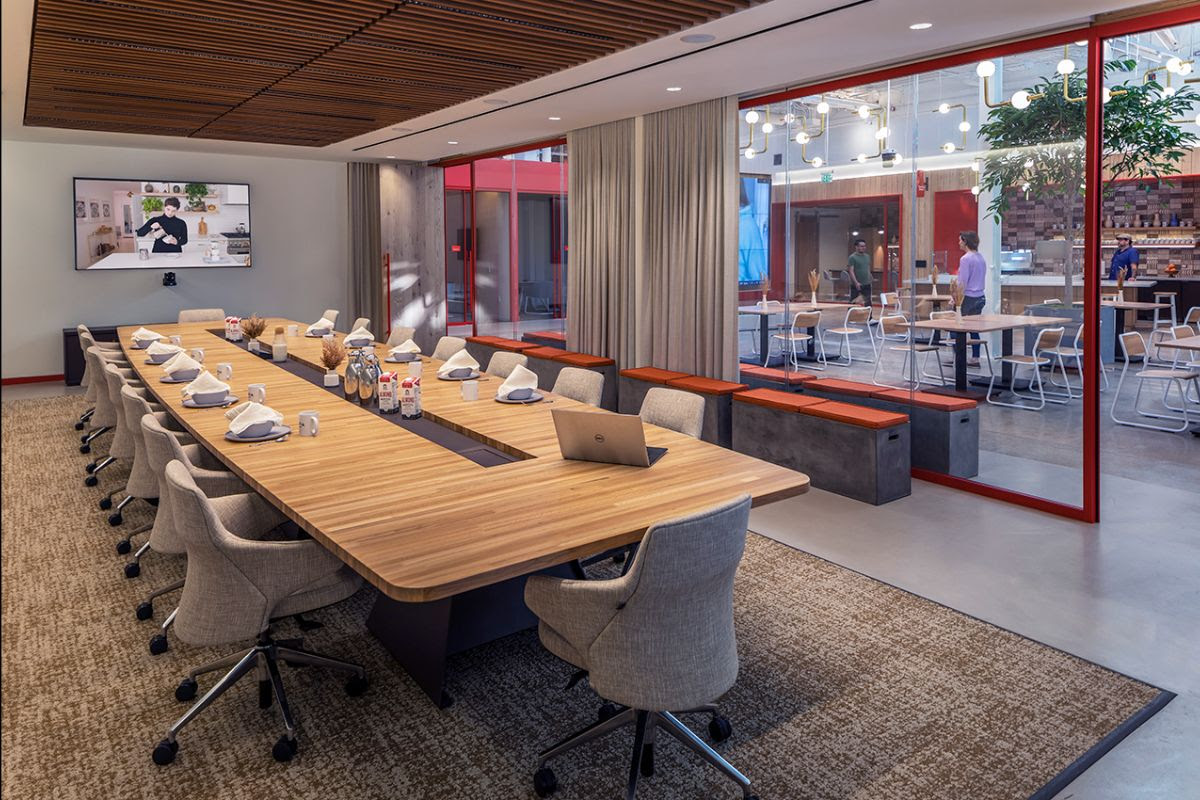


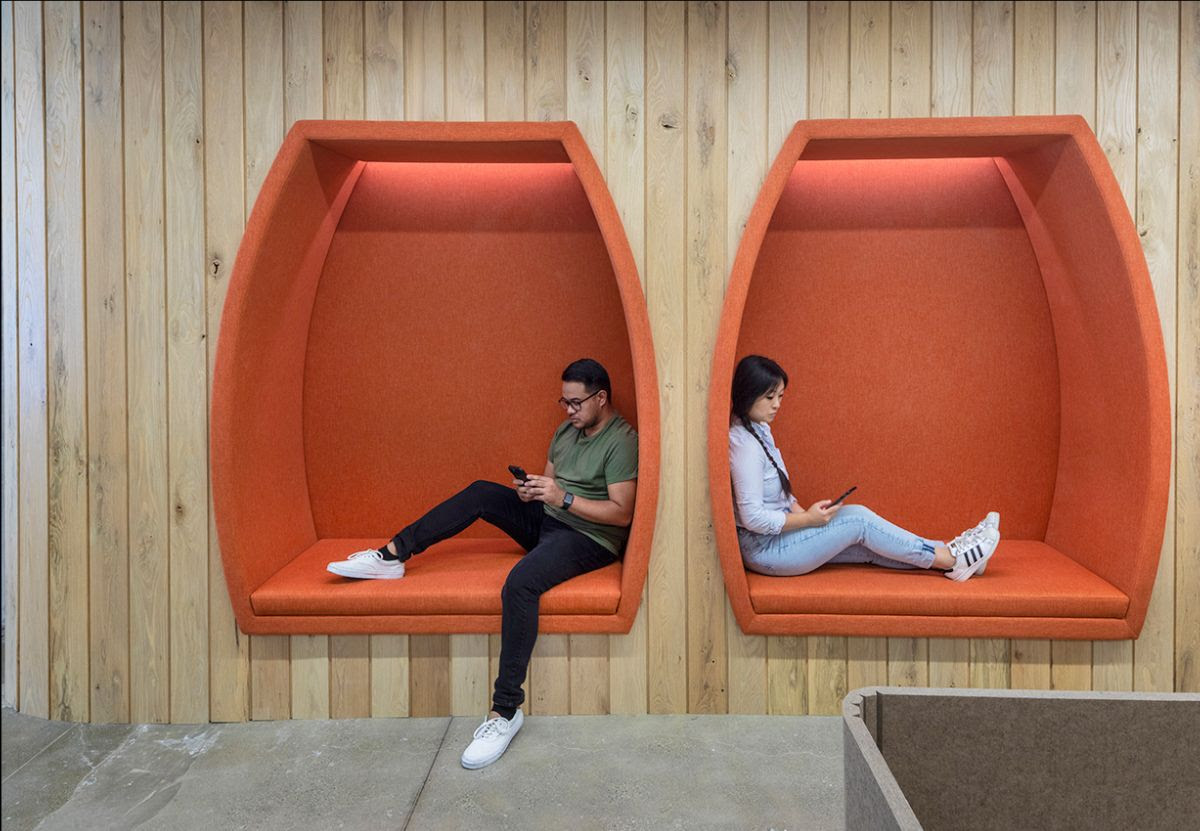
Related Stories
| Aug 13, 2013
DPR's Phoenix office, designed by SmithGroupJJR, affirmed as world's largest ILFI-certified net-zero facility
The new Phoenix Regional Office of DPR Construction, designed by SmithGroupJJR, has been officially certified as a Net Zero Energy Building by the International Living Future Institute (ILFI). It’s the largest building in the world to achieve Net Zero Energy Building Certification through the Institute to date.
| Aug 8, 2013
Stanley Hardware introduces Flexi-Felt for protecting floors
Stanley Hardware offers a solution to the frustrating problem of protecting your floors. The answer is Flexi-Felt®, an innovative product line that eliminates the aggravation of frequently replacing felt pads and leg tips that usually wear down or fall off, causing damage to expensive floors.
| Aug 8, 2013
New green property index could boost REIT investment in more sustainable properties
A project by the National Association of Real Estate Investment Trusts (NAREIT), the FTSE Group, and the U.S. Green Building Council to jointly develop a Green Property Index could help REITs attract some of the growing pool of socially responsible investment money slated for green investments.
| Aug 6, 2013
CoreNet: Office space per worker shrinks to 150 sf
The average amount of space per office worker globally has dropped to 150 square feet or less, from 225 square feet in 2010, according to a recent global survey conducted by CoreNet Global.
| Aug 6, 2013
Australia’s first net zero office building features distinctive pixelated façade
Australia's first carbon neutral office building, featuring a distinctive pixelated façade, recently opened in Melbourne.
| Jul 30, 2013
In support of workplace chatter
As the designers of collaborative work environments, architects and engineers understand how open, transparent spaces can cultivate the casual interaction and knowledge sharing that sparks innovation. Now a new study reveals another potential benefit of open workplaces: social interaction that supports happier employees.
| Jul 29, 2013
2013 Giants 300 Report
The editors of Building Design+Construction magazine present the findings of the annual Giants 300 Report, which ranks the leading firms in the AEC industry.
| Jul 25, 2013
3 office design strategies for creating happy, productive workers
Office spaces that promote focus, balance, and choice are the ones that will improve employee experience, enhance performance, and drive innovation, according to Gensler's 2013 U.S. Workplace Survey.
| Jul 25, 2013
How can I help you?: The evolution of call center design
Call centers typically bring to mind an image of crowded rows of stressed-out employees who are usually receiving calls from people with a problem or placing calls to people that aren’t thrilled to hear from them. But the nature of the business is changing; telemarketing isn’t what it used to be.
| Jul 23, 2013
Tell us how you're reimagining the medical office building
"Obamacare" implementation will add thousands of people to the ranks of the insured, including many who formerly sought primary care in emergency rooms. Now, these patients will have coverage that allows them to more easily access the typical treatment channels—and that means greater demand for services provided in medical office buildings.




